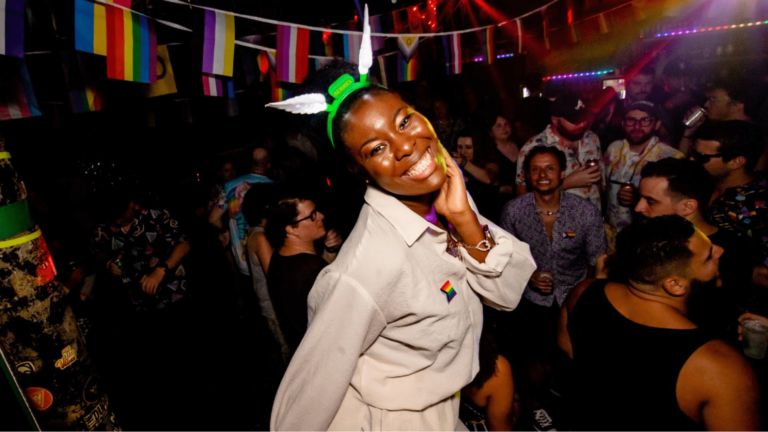A strong sponsorship package can do wonders for an event, magnifying your marketing and promotional efforts and broadening its impact. But securing a sponsorship package is easier said than done – the boom in virtual and hybrid events has given sponsors additional avenues to explore. So how do you create competitive and valuable sponsorship packages that will attract big brands and send your event to the next level?
The ideal sponsorship package is one that connects you with a sponsor who can add complementary content, products, or messaging to your event. A sponsor that appeals to your own audience benefits both you and your sponsor and gives your audience a better, more positive experience. So how do you create a perfect sponsorship package that will attract the right sponsor to you?
According to a recent survey from industry tracker Bizzabo, one-third of responding marketers say their companies will spend over 20% of their marketing budget on sponsoring events. This means that companies are actively looking for events to sponsor, so there’s no reason your event can’t be one that catches their eye. This guide will show you how.
Table of contents
What is an event sponsorship package?
What are the benefits of event sponsorship?
How to pitch your sponsorship package
How to design a perfect sponsorship package
10 Event sponsorship examples big brands love
What is an event sponsorship package?
A sponsorship package is simply the various features and benefits you propose to exchange with a brand. That may include branding opportunities, speaker slots, or product demonstrations. The particulars will depend, of course, on the nature of your event. But the package should demonstrate what the sponsor receives and what you or your event receive.
When putting together your event sponsorship packages for various brands, remember that, like any business, they’ll ultimately look for a return on their investment. Show them how they can achieve that.
What are the benefits of event sponsorship?
The benefits of event sponsorship are enormous, both for event creators and for brands. Events are often improved by additional features, and that’s what sponsorships provide.
For event creators
Sponsorship helps creators and their events in plenty of ways, such as:
- An increase in budget and funding for your event
- An increase in trustworthiness through association, as potential guests will be more familiar with the brand names and likely trust whomever they may be associated with
- Greater promotional exposure through the sponsor’s own advertising and marketing efforts, resulting in higher attendance
- An improved guest experience by the additional content the sponsor provides, enhancing the chance of return attendance
- Fruitful partnerships with sponsors that can develop into additional sponsorship opportunities and other co-ventures
For sponsors
Sponsors are after exposure – of their products, of their name, or for their services – and data that shows how your audience responds to emails, surveys and other communications. They can get that exposure and data in a number of ways, such as:
- Reaching a new audience through branding efforts at the event
- In-event speaking or demonstration opportunities
- Access to attendee data, such as click-through rates and open rates, to inform future product development
How to pitch your sponsorship package
Okay, so you know what your sponsorship needs to accomplish and what you want it to look like. But how do you put together a pitch that works? What’s a good sponsorship package template? It’s all about tailoring your proposal to the right companies.
Know your target companies
Before you approach any potential sponsor, make sure you know your event and what you’re offering inside and out. Brand executives will no doubt have questions for you about the event, and being able to answer those questions fully will inspire confidence both in your event and in you. With the right amount of preparation, you can anticipate many of the questions and have an answer ready to go. Make sure you can explain:
- How will the company benefit from sponsoring your event? (Remind them of the exposure they’ll receive, and have ready past attendance figures at your events or response to event promotional efforts.)
- How many attendees will be going to the event? (Make sure you’re current on the most recent ticket sales or registrations and have past numbers ready.)
- What are the demographics of your audience? (When you post your event on Eventbrite, you can tailor guest registrations to include demographic information.)
- Do you have experience with such an event before? (Whether it was a school talent show or a professional conference, you likely have some experience or you wouldn’t be doing this!)
- What is the expected ROI? (Use past event numbers to make an estimate for the current event. Or, if past ROI isn’t available, research the ROI of similar events.)
Find the right sponsors
Create a wish list of sponsors you’d love to partner with, based on industry, location, and past sponsorship history. Then your research begins. Find out what each brand is focused on so you can tailor a sponsorship package that will meet their goals.
As you do your research, try to answer these questions about each brand:
- Are they a good fit for your brand?
- Do you have significant audience crossover?
- Can your conference add value for them?
- What market are they trying to reach?
- Are your audience and their target market a match?
Demonstrate your value
Once you’ve got your target sponsors selected, you’ll want to start to prepare your pitch. Start with the big picture: show them how your values are complementary while opening new opportunities. Explain how your event will reinforce their brand and provide them with additional tools to further their own marketing goals. You want to convey that you’re professional and understand not only that the brand has its own objectives, but that you understand what those objectives are.
Get testimonials from past sponsors
A good word from past event sponsors can work wonders in convincing your current target of your event’s value. Survey past sponsors about their experience with your event and share their (positive) responses, focusing on professionalism and especially their return on investment.
How to design a perfect sponsorship package
Of course, what will really get a brand to sign on and sponsor your event is a convincing package of features and benefits. Remember to emphasise how the brand will gain exposure and earn an ROI. And providing options at a range of prices lets the brand find ways to support you no matter the size of their budget.
Create different sponsorship tiers
Sponsorship tiers are a great way to provide options at different price points. Include certain benefits and features at one price, then add more as the price increases. Offer tiers such as Gold, Silver, and Bronze, or theme your tiers to match your event (a food-based event might offer tiers labelled Breakfast, Lunch, and Dinner, for example).
Distribute sponsor benefits per tier
It’s essential to be clear about what each tier offers and what you need in return. Put it in writing so that there can be no miscommunication; the last thing you want is a dispute over missing benefits or funding. Spell it all out: the benefits, perks, and requirements for each tier. Avoid vagueness and legalese.
Offer custom gifts
Eventgoers love freebies, so who are we to deny them? The fact is, custom gifts are an effective way to increase brand exposure – after all, the guests are taking the brand name home with them. Custom gifts don’t have to be expensive, either, and these days, it’s easy to customise just about anything. Try these event gift ideas:
- Branded tote bags
- Customised pens
- T-shirts with brand logo
- QR-coded wrist bands
- Sunglasses
- Hand sanitiser
- Keychains
Add value to your sponsorship
Once you’ve sold brands on the value of your audience, it’s time to negotiate the details of the brand activation itself. Here are some strategies to increase the value of your package to sponsors:
- Offer exclusivity. According to IEG, category exclusivity is the most valuable benefit you can offer sponsors. Can you assure a sponsor that you won’t partner with anyone else in their industry? Or can you assure them that they’ll be the only sponsor with a specific type of activation? “In many cases, less is more,” says Jason Scoggins, who heads sponsorships at BottleRock Napa Valley. “More sponsors would prefer to be involved in a festival that has fewer sponsors overall in the footprint of the festival ground.”
- Extend the sponsorship beyond the event. Digital extensions of the sponsorship through social media posts and integration into your website are fairly standard. Think outside the box. You could offer the ability to co-brand assets with your event all year long or do giveaways leading up to the festival. “Take a three-day festival and make it a six- or seven-month program with incremental value, whether through online initiatives or additional events throughout the year where brands can get visibility,” Anand says. “You can offer more value that way for brands.”
- Provide speaker opportunities. Speaker slots confer authority and enable the brand to extend its messaging in a less overtly sales-oriented way. This in particular, can appeal to business-to-business companies, which can seek to establish expertise as a way to market themselves to other businesses.
- Prominent placement. Include your sponsor’s branding on your event website and social media pages in a noticeable position. This communicates the brand’s goodwill to your event, so it’s a win-win.
10 event sponsorship examples big brands love
While dreaming of how event sponsors can provide unique experiences for your attendees, help offset event expenses, and broaden the reach of your event, you may wonder where to begin finding and securing event sponsorships. By understanding your attendees’ needs, matching them to a sponsor’s objectives, and creating event sponsorship packages that offer opportunities for the deeper connection that brands seek, you can show potential sponsors that your event is worth their consideration.
To help you get started, here are 10 creative ideas for sponsorship packages that will get a sponsor’s attention, whether you’re planning a virtual or in-person event.
1. Interactive art installations
At conferences and music festivals alike, people love interacting with art installations, which grab attention and engage attendees. In 2019, Sensorio, an arts and events space in Paso Robles, California, began hosting an installation of UK artist Bruce Munro’s “Field of Light,” made up of 60,000 LED orbs on flower-like stalks.
The installation became an event in and of itself. Sensorio sold general admission tickets as well as VIP tickets, which gave attendees access to a private dining room. The installation’s tenure has been extended indefinitely due to popularity, and likely draws in creators looking to put on an event at Sensorio.
2. Sponsored livestreams
Live video can extend your reach and have a real impact on your bottom line. In fact, 30% of people who watch a livestreamed video will attend that same event the following year. Offering a livestream as a sponsorship package can provide brands with the opportunity to engage with audiences in niche markets. You can even set up your livestream so that you can accept donations as you stream via Eventbrite.
3. Virtual reality installations
Virtual reality (VR) offers events and brands alike an opportunity to create engaging, innovative, and multi-sensory brand activations for attendees, both in-person and remotely. A VR headset allows the user to view 3D imagery, performers, and places that might not otherwise be available to them.
4. Sponsored entertainment
Event attendees love a special guest, like a musical artist or a comedian. Bringing in big-name talent is a great way to attract the brands on your wishlist. Within your event sponsorship proposal, be sure to include details of talent and entertainment and the key sponsor opportunities and benefits.
Potential sponsors will love the idea of a celebrity performance sponsored by their brand, with their logo strategically placed in person and/or on the livestream so that all attendees know who made their fun possible.
5. Sponsored merchandise
Everyone loves merch, especially when it’s useful or unexpected. Providing branded tools attendees might need while they’re at the event, such as lanyards, pens, or water bottles, is a classic sponsorship opportunity. Virtual events can delight their attendees with merch sent directly to their door, and this gives sponsors the opportunity to connect with attendees in their own homes.
Try to think of an idea that targets what your sponsors care about. For example, a self-care event might offer lotions, stress-relieving colouring books, and chocolates to wellness-minded attendees.
6. Food and drink brand activation
Offer a brand activation around food at your event or via the food you deliver to virtual attendees. Consider food printing (logos printed on cupcakes), company-branded drinks, pop-up restaurants, a chef’s table, or a mobile kitchen.
The Women’s Health Clinic decided to take its 2021 International Women’s Day Event online, with attendees receiving boxes of curated canapés from top local chefs. The Women’s Health Clinic is also working on a cookbook filled with recipes from the chefs who have contributed to the Women, Wine, and Food event since it started 40 years ago. This will be a great reminder to fans of the event all year round.
7. Stress-melting game stations
Having a games area at your event provides attendees with a place to have fun and network. Ping-pong, casino card games, old-school board games, or giant versions of party favorites like Jenga can bring valuable brand activation for sponsors.
8. Sponsored closed captioning or interpretation
Adapting events for attendees with different needs is crucial, especially when you are reaching a diverse audience with a virtual event. Closed captioning or interpretation throughout your event makes for a great event sponsorship package opportunity with lots of exposure for potential sponsors.
YouTube, Facebook, and Zoom (via third-party services) can provide captioning services for your livestream. Thinking of the ways you cater to all potential attendees will mean a lot to your audience, and it will be a good opportunity for a sponsor to demonstrate that they care as well.
9. Short fitness and wellness sessions
Quick breaks for guided stretching or fitness sessions can be a welcome way to re-engage attendees who are on their feet at a live event. It works well at virtual events, too.
10. Unique giveaways
Gifts and giveaways are excellent event sponsorship examples, especially if you and your sponsor tie the giveaway to something experience-based, like a trip.
Meeting their needs
Getting the right sponsorship is about three things:
- Finding the right sponsor, so do your research
- Putting together the right sponsorship package, with various tiers and other options
- Putting together the right pitch that will convince the brand you’re the creator with the perfect event for them to sponsor
Want to learn more? Get additional tips and resources from Eventbrite.






